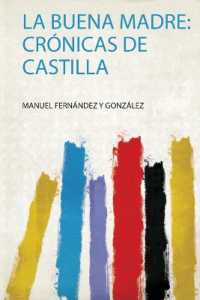- ホーム
- > 洋書
- > 英文書
- > Cinema / Film
Full Description
Scream reputedly transformed the slasher subgenre in 1996, heralding a new subgeneric form: the postmodern slasher. Despite being a distinctive, influential phase in the subgenre's development, it has been widely assumed that postmodern slasher films are distinguished from their predecessors because they employ intertextuality, metafictional self-reflexivity, pastiche and deconstruction.
The Postmodern Slasher Film challenges those assumptions by demonstrating that those same traits have been present in the slasher subgenre since its 1980s boom-period. This book instead argues that postmodern slasher films are more pertinently distinguished by their tone, which is characterised by self-consciousness, duplicity, cynicism and fatalism.
Contents
List of Figures
Acknowledgements
Introduction
1. The 'Postmodern' Slasher Film
2. Intertextuality and Metafiction in the Postmodern Slasher Film
3. Tracing Intertextuality and Metafiction Back to the Boom-Period
4. Parody and the Slasher Subgenre
5. Deconstruction, Ontological Doubt and Authorial Control
6. Irony, Duplicity and Superiority
7. Epistemic Doubt in the Postmodern Slasher Whodunit
8. Callousness, Insularity, Presentism and Fatalism
Conclusion: Legacies of the Postmodern Slasher Film
References
Filmography
Index







